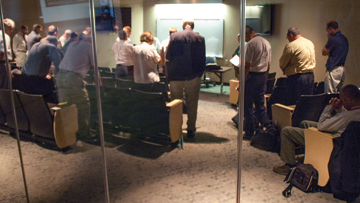You have free articles remaining this month.
Subscribe to the RP Witness for full access to new articles and the complete archives.
If every person counts, and every vote counts, and every moment counts, that puts a lot of pressure on a group to operate at peak capacity. How does the need for great stewardship get worked out in the “courts” of presbyterian churches such as the RPCNA?
Take the seemingly simple issue of ruling-elder attendance at Synod. The large majority of pastors come to Synod, but their contracts typically allow them to attend and compensate them while there. Far fewer ruling elders attend than are eligible. Except for this writer, I’m not aware of another ruling elder whose contract allows them to be at Synod and compensates them for the week. Quite often they have to take paid vacation—vacation spent in dawn-to-dusk deliberations rather than in resting and recreating with family.
Why does it matter how many ruling elders attend? In the past few decades, some very significant decisions have been decided by a single vote. What if it had been easier for ruling elders to attend (and also easier for the pastors who were not able to attend)? What motions were not made that might have been made? What needs went unknown that should have been known? What congregations were not well represented in the decisions?
The Business of Synod Committee was created with such questions in mind. Others have carefully considered this as well, but Business of Synod Committee was formed to help Synod practice greater excellence in fulfilling its mission, year after year.
One idea that has been examined is shortening the time of Synod. Some denominations similar to ours spend a similar amount of time on their synod-level meetings, while others meet for a shorter time or have their synods every two or three years. Our Synod meeting this year was about half the length of the usual, in large part because this is also a year with an international conference. Some Synod members said they believe all Synods could be this short, albeit with some rethinking of how the work is done.
And clearly it would take some rethinking. The agenda was completed this year, but some committee reports were intentionally postponed until next year. And the chairmen for the two judicial cases that came before this Synod stated that the committees did not have the time to delve deeply into the issues, resulting in those cases being given to longer-term committees and the judgments being postponed a year.
What’s the answer? One would be to keep Synod’s typical five-day length but encourage ruling-elder attendance with additional reimbursements (such as consideration for lost wages). Wives and families could be encouraged to attend with meetings or activities for them. We could also shorten the average Synod but provide new means for dealing with routine matters so that we continue to have as much, or more, time for deliberations, reports, and cases that affect the future of the church.
